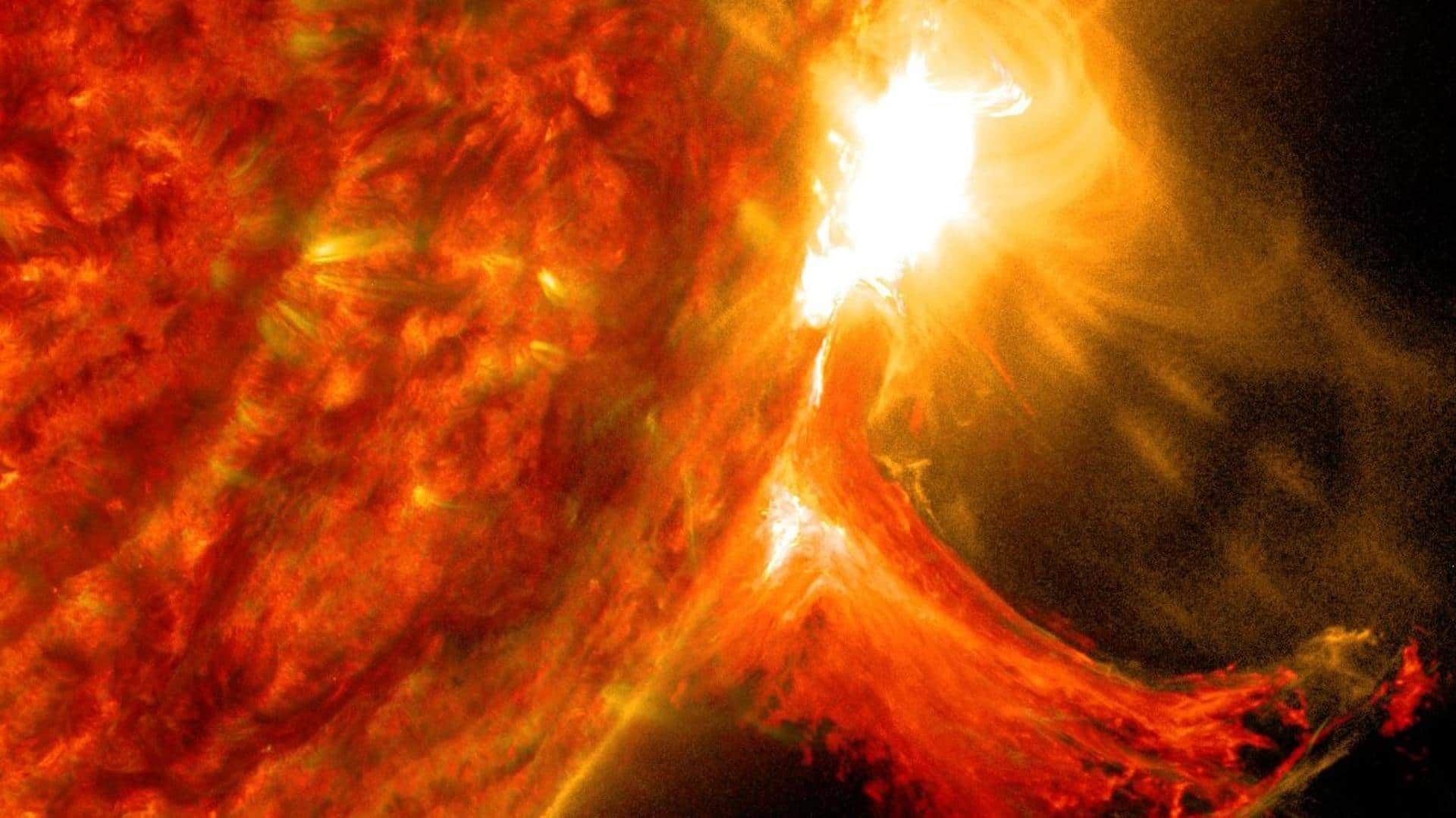
Sun erupted with a major flare: What does it mean
What's the story
A massive solar flare erupted from the Sun on February 11 and caused radio blackouts on some parts of Earth. According to Space Weather Prediction Center (SWPC), it is classified as a powerful X1.1-class solar flare and originated from a spot on the Sun called Active Region 3217. That's not all, more solar flares are expected from this region in the coming days.
Context
Why does this story matter?
Is there a way to determine where solar flares would originate? A recent study concluded that signals from the Sun's corona, the uppermost region of the solar atmosphere, could help estimate which regions of the Sun are likely to discharge flares. What makes solar flares a concern is that they can potentially jeopardize radio communication systems, navigation signals, and even power grids.
Solar flares
Solar flares have varying intensities
Solar flares are giant explosions on the Sun that expel pockets of energy, light, and high-speed particles into space, according to NASA. The flares have a variety of intensities and are broadly classified as A, B, C, M, and X. Each class is further subdivided from 1-9 and there is a 10-fold increase in energy across the classes.
Intensity
X-class solar flares are the most intense
While X-class is the most intense, C-class and smaller solar flares are considered minor events. M-class flares can cause brief radio blackouts at the poles and are sometimes followed by minor radiation storms. One of the strongest solar flares ever recorded was in 2003. It was an X28 solar flare and was so strong that it overloaded the space weather sensors measuring it.
Information
The X1.1 flare led to radio blackout over South America
As per SWPC, the X1.1 solar flare created a temporary radio blackout over South America. More flares are expected from Active Region 3217 as it "moves across the Sun creating occasional degradation of high frequency (3-30 MHz) communication," said SWPC officials in an alert.
CMEs
Intense solar flares can also cause Coronal Mass Ejections
Intense solar flares can spark what's called Coronal Mass Ejections (CMEs). These are large clouds of solar plasma and magnetic fields that are released into space after a solar eruption. CMEs are expelled from the Sun at speeds ranging from less than 250 km/s to as fast as nearly 3,000 km/s. The fastest Earth-directed CMEs can reach the planet in about 15-18 hours.
Auroras
Was there any CME associated with the X1.1 solar flare?
There was no CME associated with February 11's X1.1 solar flare. However, as reported by spaceweather.com, there was a CME spotted from a different event, an eruption of a solar filament from the Sun's northern hemisphere. This CME is heading toward Earth and is expected to reach the planet on February 14 which can lead to intense auroras.